A bespoke engagement ring
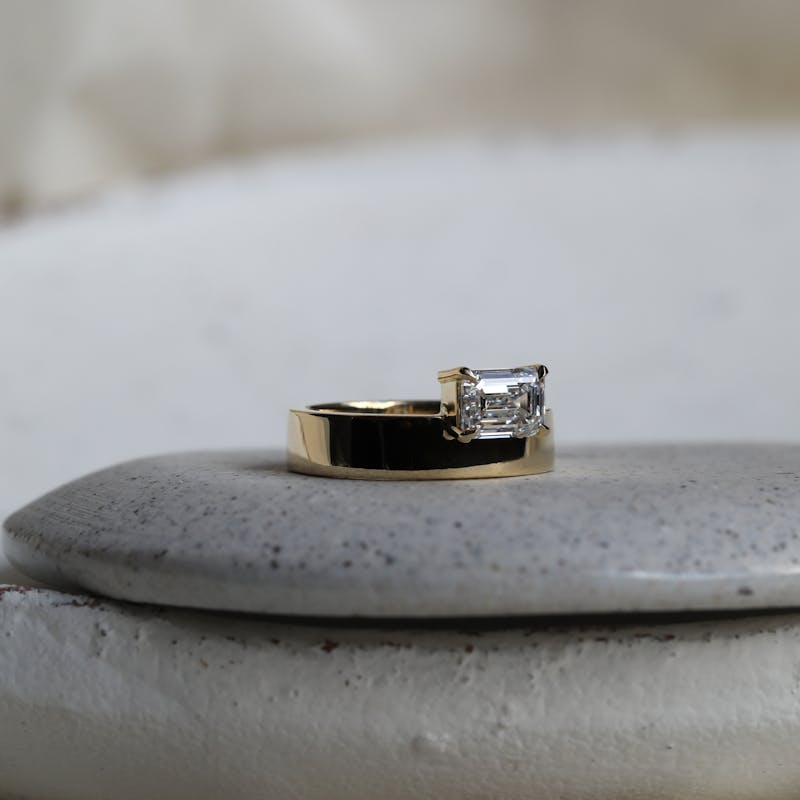
Are you thinking of going bespoke when buying your engagement ring? The process is remarkedly straightforward, but it is still somewhat shrouded in mystery.
To help remove any doubt about what will actually happen, we spoke to one of our jewellers, Rachel Boston, who has a lot of experience with helping couples design and produce their dream engagement ring.
If you decide to go semi-custom or fully bespoke on Finematter, you will first fill out a form so we can match you with a jeweller. Once you’re in contact, the fun begins.
Here is what Rachel Boston had to say about the semi-custom or fully bespoke process for an engagement ring.
The difference between fully bespoke and semi-custom
Rachel explains: “Bespoke has always been a very foundational aspect of my business [as a jeweller], whether it’s full bespoke where I’m doing design, where we’re doing CADs - a CAD rendering is a 3D computer drawing of the ring -, or it’s a softer version of bespoke where we’re kind of customising existing pieces.
“If someone loves our Clara ring but wanted it with an oval diamond instead of a pear or a different band shape or a thicker band or coloured side stones, it means that all of that is completely possible.”
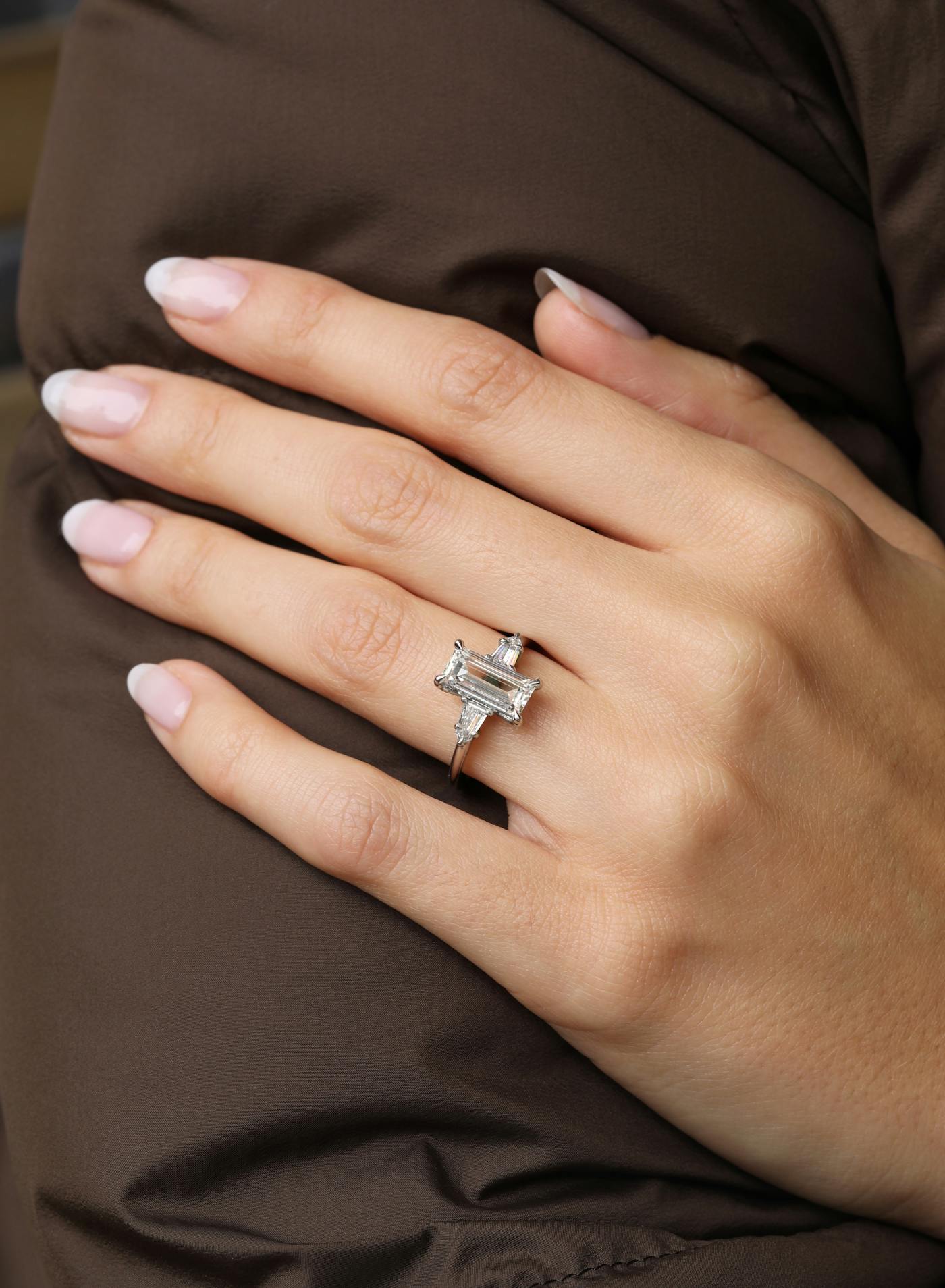
Rachel says that semi-custom “isn’t as expensive, or a slightly less expensive version of going the full bespoke route, where we’re doing loads of different designs.
“But even the bespoke version isn’t actually much more expensive than just ordering one of our existing designs.
“We always ask the client to set the budget and we work backwards from that.”
Most jewellers have a minimum spend to take on bespoke projects. Rachel Boston has a minimum spend of £4,500. “As long as it’s covering that then you can say, I want to spend £4,700 or say I want to spend £100,000.
“We just work backwards from that when we're designing and sourcing the stone.
“I find that much more effective than us just throwing random designs at someone and then they're either overwhelmed or underwhelmed. It's better that we always keep the customers’ budget very much at the forefront of the design process.”
So here you have it: your budget will be taken into account from the very start of your bespoke journey, and your jeweller will try to get you the maximum ‘bang for your buck’ within your range.
If you’re in doubt about how much you want to spend, or what you will need to spend to get the engagement ring you have in mind, we recommend spending some time browsing existing designs from jewellers you like, and getting a sense of their price ranges, before you decide on a budget. Most jewellers can also work with a budget range, and can also advise on what design decisions impact the price most (read our engagement ring guide to understand price drivers better).
Myth 2 – You need to know exactly what you want
Your initial consultation is where you’ll tell your jeweller what you have in mind, and they start to get a sense of what you’re looking for. But don’t fret! Rachel has seen it all.
“We see people who have made a 20-page PDF and have done so much research and know exactly what band width they want, what stone, what carat, to people who have absolutely no idea. And that's fine.
“We're very experienced with both sides of it, and I mean generally it's people who have a loose idea and then we can just sort of help finetune it as we go.”
To make the process as easy as possible for everyone involved, Rachel recommends “having a few [visual] references, or at least have in mind what stone you want to have.
“Do you want a diamond or a sapphire, or the cut. These sort of foundations are good to know. But it's not a one-size-fits-all.
“We're very much there to tailor the experience depending on the client’s needs so we can really work with anyone at any stage of the process.”
We see people who have made a 20-page PDF and have done so much research and know exactly what band width they want, what stone, what carat, to people who have absolutely no idea. And that's fine.
Myth 3 – The person buying the engagement ring has to be the one making all the decisions
Rachel sees a lot of men “coming in by themselves”. But couples do come in too! And Rachel says she “loves that”.
“I love having both inputs, to be honest. Because I think sometimes men play it very safe, and I don't blame them. It's a lot of money to spend without knowing 100% what your partner wants, so they may think, well, she'll love a round diamond solitaire. That's what every woman wants, right?
“Women are so much more adventurous and often want something that is more unique to them. They don't want something that all their friends have.
“It’s often more fun and flexible when we have women as well. So we really encourage both.”
They may think, well, she'll love a round diamond solitaire. That's what every woman wants, right? Women are so much more adventurous and often want something that is more unique to them. They don't want something that all their friends have.
Myth 4 – The process is really complicated for a bespoke engagement ring
It’s easier and less pain-free than you think, we promise!
Rachel explains: “After an initial appointment, we sort of have enough direction to either know whether it's time to start designing or time to start stone sourcing.
“If we're stone sourcing, then we get together some diamonds or some sapphires or rubies or whatever the customer wants, and we normally e-mail them through different options. We'll send through all the pictures, the stone specifications.
“All the diamonds that we use are certified and conflict free. We send an initial recommendation of stones for their budget and the design.
“The clients have the option to either choose something from the initial list we send, or if they want to see more options, we'll keep sourcing until we have something they're happy with.”
“If people are really unsure about what stone cut they want, for example, they just cannot choose between a pear or an oval, then we’ll say, let's start with designs.”
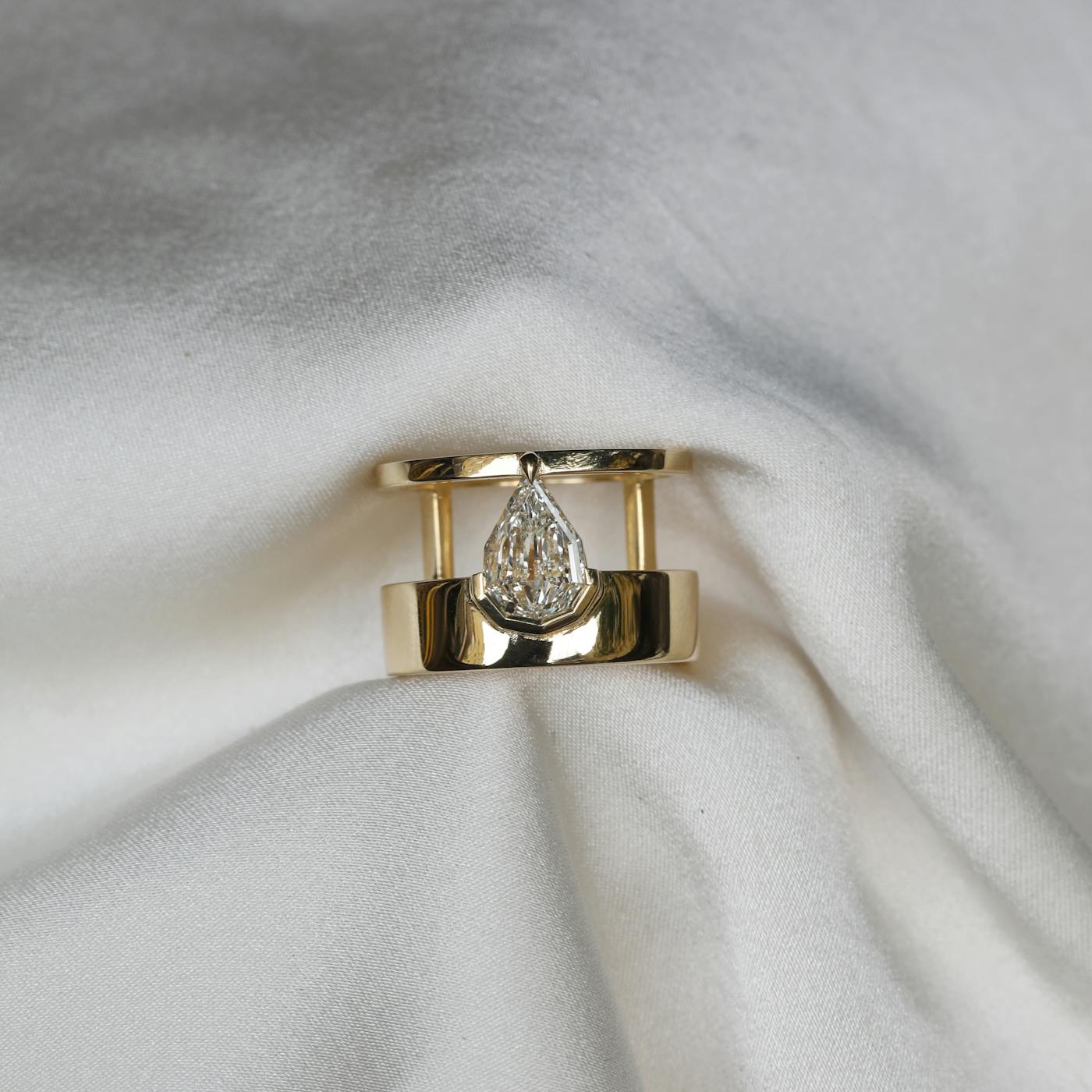
Rachel says she “normally starts with six initial designs. We just start with the top view.
“So that will be based on the brief. So again, very dependent on the client.
“Sometimes people have a really set idea and it's just doing very small variations, such as different claw settings or different band shapes.
“Other times, people have loads of ideas, they maybe want to have a double band or they want like a triple… Those are quite fun to do, and I'll do lots of different variations to begin with and then e-mail that to the customer to get their feedback.
“It's never ‘you get these six designs and it's going to be one of them’. It’s very much a collaboration between the two of us.
“I get that feedback, you know, if they like the band from design six, but the setting from one or they would like design two but with different side stones, that's fine.
“We'll keep working on it until we have something that they're happy to move forward with.
“Once we have the design and the stones all confirmed, that's when we'll move on to a CAD rendering.
“We send the CAD to the client to make sure they're fully confident with the design. If there's any alterations they want we can make changes at that stage.
“It's a good time just to make sure that everything is exactly as they've envisioned.”
Myth 6 – You’ll get a design that’s already been given to another customer
Rachel explains jewellers are “in a box with engagement and wedding rings. There are only so many designs you can do, so there's always going to be elements coming through in different ways.”
But don’t worry, your ring will still be 100% made for you only.
“We always do fresh drawings for each client. Sometimes people in the meeting are describing something we've already done or there's something that we've put on the website.
“I will try to show them the original reference, especially if it's already on the website.
“If you think you're going to end up with an existing design, it's probably not worth going through the bespoke process. We should go with this design now, because then we can put more of the budget into the stones rather than needing to allocate some of the budget towards design time. We’re very upfront with clients.
“Some people want bespoke for something that is so classic that of course, we'll have done an oval solitaire D shaped band before, and we're going to do a million more. Not because we're churning them out, but because it's something that's just so requested. Even if we design it specifically for you, it’ll still be very classic.”
Myth 7 - It will take forever to get a bespoke engagement ring
Buying a fully bespoke engagement ring will obviously take longer than buying an existing design. But the process doesn’t have to drag on.
Rachel says: “Once they sign off on the CAD, we start production. From then it's normally seven to eight weeks. The whole process normally takes around three to three and a half months.
“It does depend on the client and how quick they are to get back to us, and how quick they are making decisions, how many alterations are needed, how many stones they want to see…
“We always recommend allowing more time than you think. Often people come with less.
“We just try to do our best and we never take jobs if we think it's just not achievable.
“I'd rather always make sure that we're fully confident we can deliver. We've never let anyone down with a completion date. But it’s important to come with at least three months.”
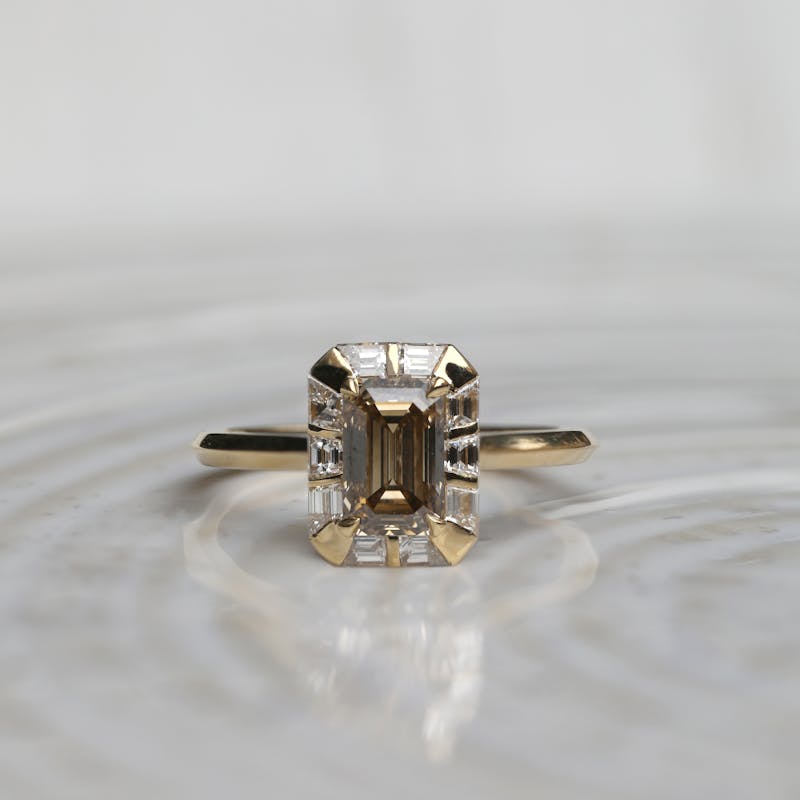
Myth 8 – Semi-custom is faster than fully bespoke
Sorry, but unfortunately, a semi-custom engagement ring and a fully bespoke one may take roughly the same time to get.
“It’s also a similar time frame. It’s probably going to be around two and a half months, three months for semi-custom.
“For every single job, we need to find that central stone, which is going to take a week or two of back and forth between the customer and I to get the stone confirmed.
“Once the stone is confirmed, then we do a CAD rendering. Even if a customer wants the design exactly as they saw it in the store, we're still always going to do a CAD rendering for them just to approve before we then move on to making.”
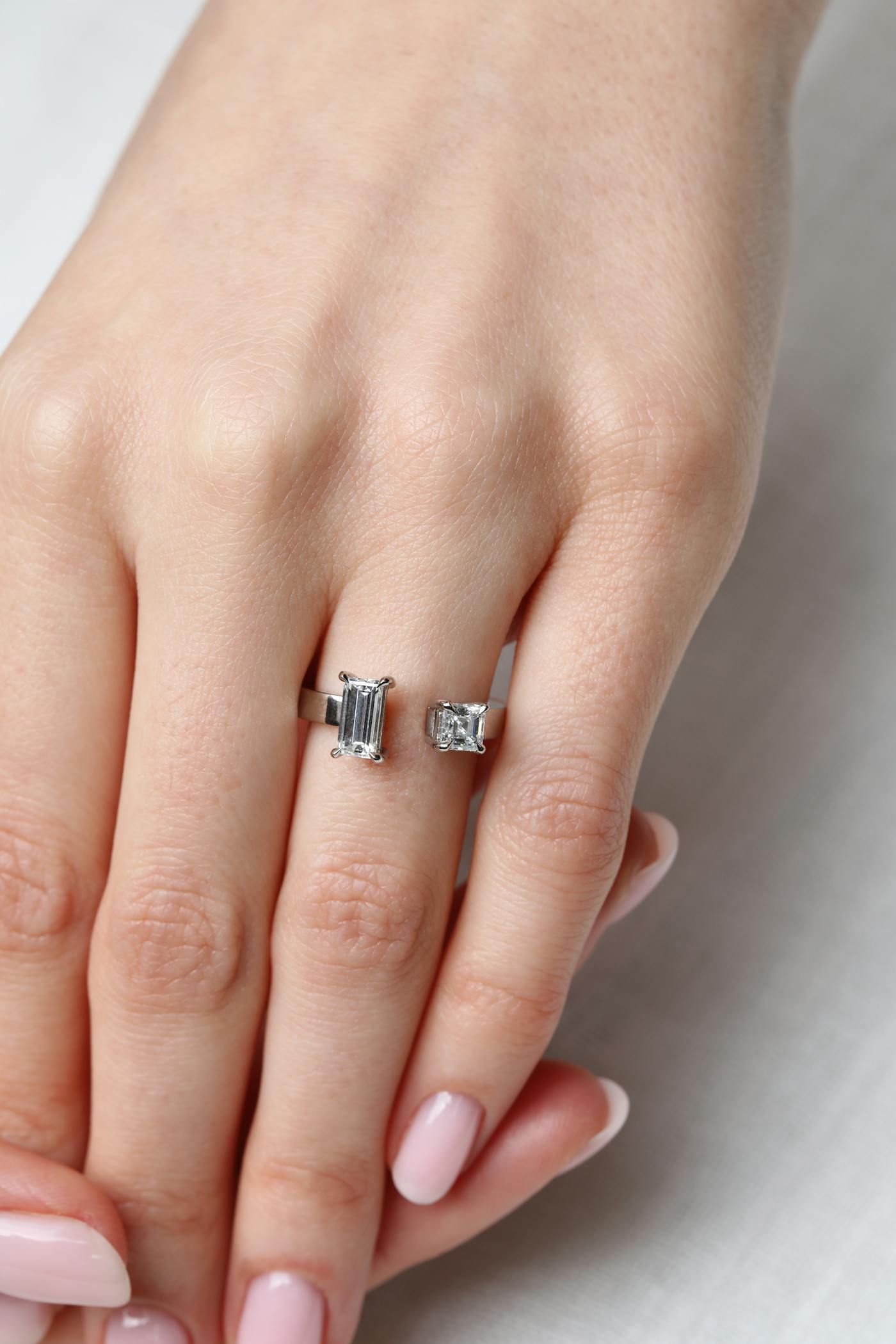
Going the fully bespoke route does mean the engagement ring you get has been designed and made for you, specifically. It goes further, as the stone has also been approved by you.
“The stone can't be exchanged or changed or anything, that's locked in.
“People get quite scared and suddenly panic about return policies. It’s worth mentioning, with bespoke and custom, we don't accept refunds or exchanges because we've literally designed it to that client exact specifications. We've purchased the stone for them, everything.”
Don’t worry if you’ve messed up though, your jeweller has probably seen it all.
Rachel remembers: “We’ve twice had to tweak a bespoke ring we made.
“One was the customer got the metal colour wrong, so we had to remake it and we remade basically the same design but in yellow gold.
“And then we've had someone who just wanted a different setting, so that was fine.
“The most expensive part is the central stone, so as long as you don't mess that up, then that's fine.”
PRO TIP
Rachel understands it can be scary to go fully bespoke, especially if you want the proposal to be a surprise and are unsure about what your partner wants.
She says: “If a person is super unsure or they have a partner that is very particular, it could be quite a nice idea to propose with a placeholder ring or a promise ring.
“You can get just like a nice ring that your partner will want to wear on a different finger at a later date.
“Propose with that and then have an appointment booked that you and your partner can come to after. It's a really lovely process to do together.
“If you are concerned that your partner is really just not going to like the ring or is wanting to be involved, then do that rather than just make a guess in the dark.”
 Earn Credit
Earn Credit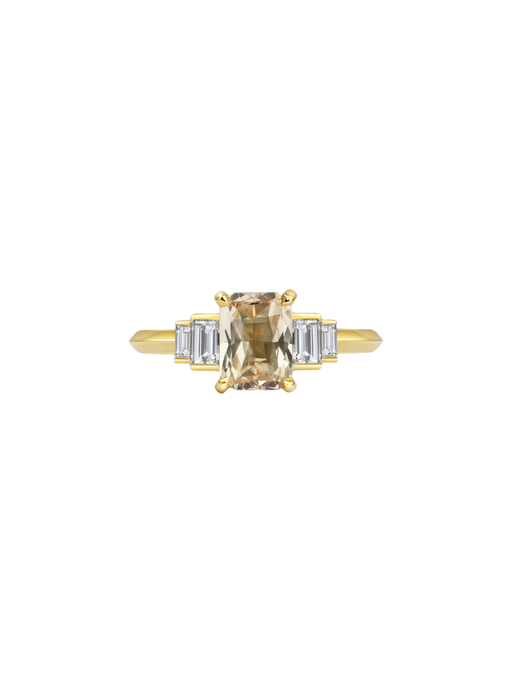


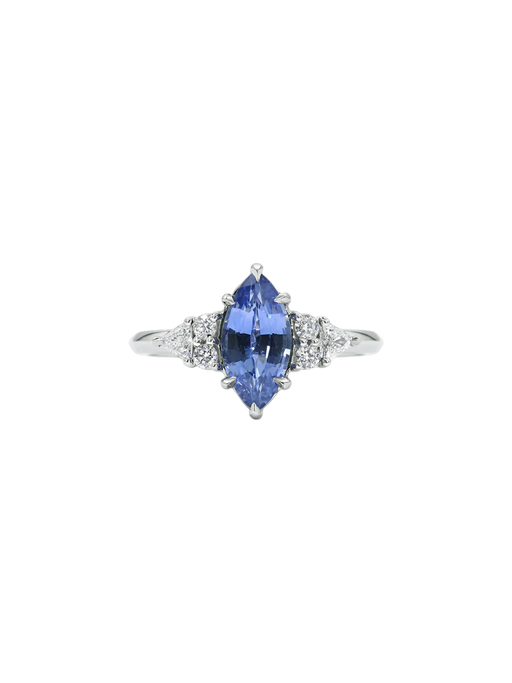
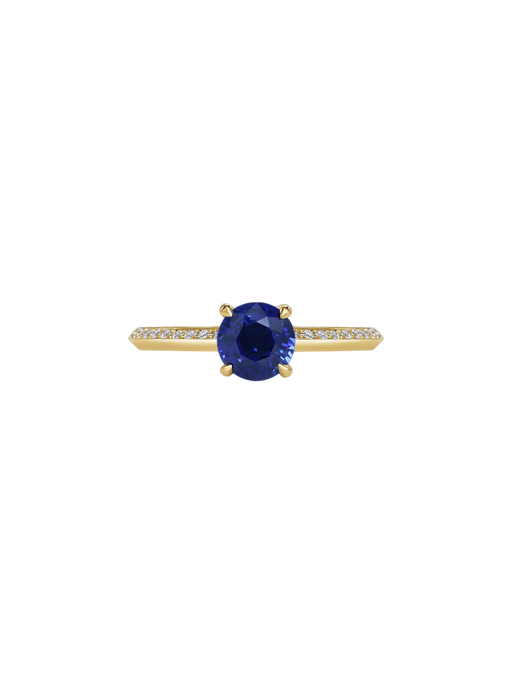
.jpg?ixlib=gatsbyFP&auto=compress%2Cformat&fit=max&w=800&h=900)